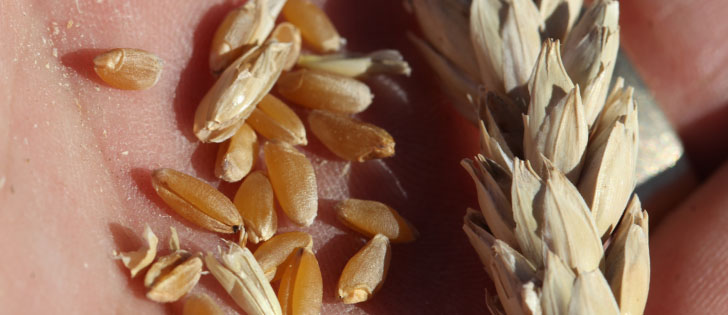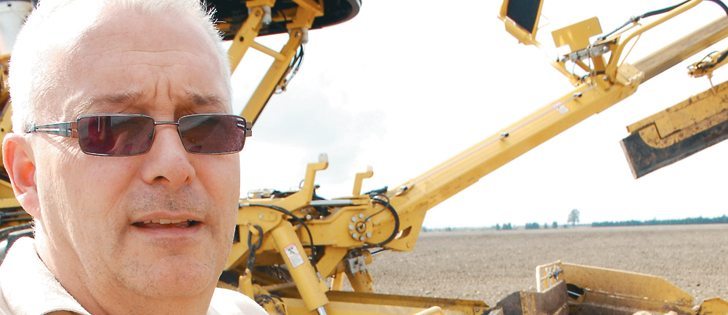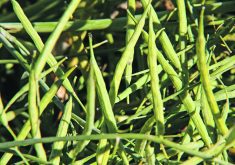Developing replacement heifers is an important area of beef reproduction because they determine the feasibility of an operation.
Production increases when a high percentage of heifers become pregnant early in their first breeding season.
The best program has replacement heifers reaching puberty at least 42 days (two estrous cycles) before the start of breeding. The reason for this advanced cycling is to avoid the low conception rates on the first estrus and take advantage of the improved rates on the third estrus.
Many producers also want to move the cycle ahead by having the heifers bred three to four weeks before the mature cow herd. This allows producers to concentrate on heifers early in the calving season.
Read Also

Agritechnica Day 3: Hybrid drive for a combine, data standards keep up to tech change and tractors of the year
Agritechnica 2025 Day 3: Hybrid drive for a combine, data standards keep up to tech change and tractors of the year.
It’s a good idea because heifers are more likely to have calving difficulty than adult cows.
This early start also gives heifers extra time after calving to resume cycling. They are then bred with the cow herd and calve with them the next year.
To follow this program, heifers must reach puberty by 12 to 13 months of age. The nutrition they receive must exceed the bare requirements for growth to allow the luxury of reproduction.
During pregnancy, demands of heifers exceed those of mature cows because the heifer needs nutrients for its growth, as well as those for fetal growth and development. This higher requirement continues into lactation.
If energy or protein is deficient during the first 21/2 years of life, it negatively impacts success of breeding, calf viability, milk production and rebreeding ability.
The first consideration in nutritional management is looking at the makeup of the herd. Heifers are smaller and younger than mature cows, so their intake can be suppressed by larger, dominant cows. To obtain the nutrients they need, heifers need to be fed separately.
Most producers use the “target weight concept.” This is useful for Bos Taurus breeds such as Angus, Hereford, Charolais, and Limousin and is based on the fact that heifers are expected to reach puberty at about 60 percent of mature weight.
Dual purpose breeds, such as Gelbvieh and Red Poll, reach puberty at 55 percent of their mature weight. In contrast, Bos Indicus (Brahma) come into puberty a little later at about 65 percent of mature weight.
Once a target is known, as well as the number of days to the start of the breeding season, producers can figure out the gain needed in pounds per day.
However, don’t overfeed them because it can have detrimental effects on pregnancy. First-service conception rates fall with a body condition score above six. Too much fat also impairs milk production and reduces lifetime calf weaning weights.
Conversely, not feeding enough can mean heifers don’t hit a target weight and fail to cycle. However, studies show that heifers fed too little in the early weaning-to-breeding period can do a “catch up” and attain the same pregnancy rates as those fed for constant gain during that period.
Some producers follow the target weight concept during gestation. A heifer should weigh 80 to 85 percent of its mature weight at the time of calving as a two-year-old. This means heifers need to gain 1.3 to 1.5 lb. per day during pregnancy, depending on their mature weight.
Energy and protein must be balanced during pregnancy. Fertility can suffer if energy is low. If the environment changes to boost needs, such as a significant wind chill, energy must increase to meet needs. Protein can remain at the same daily intake despite this requirement for calories.
For calving, a body condition score of at least six should be the target. If heifers are already that heavy early in pregnancy, they should be fed to maintain body reserves. Similarly, cows that maintain weight in the last half of pregnancy have higher subsequent pregnancy rates than those that lose weight and have to gain it back later.
Heifers that calve in poor body condition have lighter birth weights, a longer postpartum interval to return to estrus and lower pregnancy rates in the following breeding season.
After calving, heifers must continue to grow, produce milk for the calves and resume cycling for the next pregnancy. Energy and protein requirements during this time are far greater than those of gestation. Because of this, weight gain or improvement of body condition score is almost impossible during lactation. It points at the importance of a correct body condition score at calving.
Recognizing the importance of body weight and body condition score, and feeding to achieve it, is the best way to optimize fertility in heifers.














